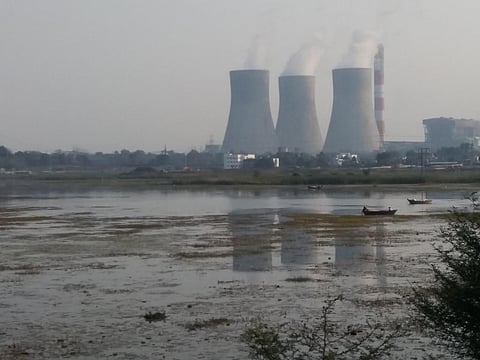India’s NDC: Why sector-specific targets are needed for reducing emissions
The Union Cabinet approved India’s updated climate pledge August 3, 2022 to communicate to United Nations Framework Convention on Climate Change (UNFCCC). The notification elaborated India’s enhanced climate targets toward achieving net-zero by 2070. However, reducing carbon emissions from thermal power plants is still a big blindspot.
The latest Nationally Determined Contribution (NDC) has committed to reducing emissions intensity of its GDP by 45 per cent by 2030 from its 2005 levels. India will also target about 50 per cent of cumulative electric power installed capacity from non-fossil fuel-based energy resources by 2030.
The decision on enhanced NDCs demonstrated India’s commitment at the highest level to decoupling economic growth from greenhouse gas emissions (GHGs).
The notification significantly emphasised the shift to renewable energy rather than reducing the current carbon emissions from thermal power plants and energy-intensive industries such as cement, iron and steel, and aluminium.
The NDC notification said:
Appropriate measures are being taken under schemes and programmess across many sectors, including water, agriculture, forest, energy and enterprise, sustainable mobility and housing, waste management, circular economy and resource efficiency, etc.
However, government measures are in contradiction to this. The scheme for reducing energy consumption in thermal power plants (TPPs) named Perform, Achieve and Trade (PAT) is not effective and carbon emitters are not given due importance.
PAT was established by Bureau of Energy Efficiency (BEE) under Ministry of Power. It provides individual targets for reducing energy consumption and subsequent GHG emissions from sectors like TPP, cement, aluminium, pulp and paper, iron and steel and textile, commercial buildings, etc.
After the target is set, each unit given is given a three-year time to reduce its current energy consumption to BEE specified targets.
The reduction of carbon dioxide (CO2) emissions from PAT Cycle-I and II are only 1.57 and 1.44 per cent, respectively. This is compared to the country’s overall emission of 825.6 million tonnes from electricity generation, analysis by non-profit Centre for Science and Environment has found.
This highlights that the CO2 target for TPPs is significantly less compared to the overall emission reduction from the sector. It emphasises that the energy reduction target is not stringent.
Carbon emissions targeted by PAT scheme
|
CO2 emission from electricity generation |
PAT Cycle-I |
PAT Cycle-II |
||
|
Achieved CO2 reduction |
Reduction per cent |
Achieved CO2 reduction |
Reduction per cent |
|
|
Million tonnes of CO2 |
Million tonne of CO2 |
% |
Million tonne of CO2 |
% |
|
825.6 |
13.6 |
1.57% |
11.9 |
1.44% |
Source: CSE analysis, 2021
The energy consumption and targets increased for 57 TPP units in the second PAT Cycle, the analysis found, despite being the same set of TPPs listed in Cycle-I.
This means that the scheme is considered lightly and the TPPs did not take proper energy reduction measures. Also, state-owned power plants have the highest share — 53 per cent — among power plants for which baseline energy consumption had increased during the target setting phase of Cycle-II.
NDCs should not only focus on increasing non-fossil-based power generations but also on phasing out units older than 20 years. This is because 49 plants in the Cycle-I list with revised targets in the second Cycle are more than 20 years old. Their energy consumption for generating one unit of power compared to newer power plants is, therefore, higher.
PAT’s penalisation aspect is also ineffective, according to CSE’s discussion with BEE thermal power plant sector experts. Even the defaulters of the first PAT Cycle have not been fined yet, even though it was completed in 2015 — seven years ago.
“The energy reduction target should be stringent to meet the global climate commitments concerning GHG emission mitigation. Targets must be interlinked to material CO2 reduction,” said Nivit Kumar Yadav, programme director for industrial pollution, CSE.
NDC’s notification also said that it does not bind it to any sector-specific carbon mitigation action. This is unreasonable because energy-intensive sectors like TPPs, cement, iron and steel are currently the hub of carbon emissions, with total annual emissions of 40, 6 and 5 per cent, respectively.
Despite being given individual targets through PAT, they continue to emit a massive amount of GHGs. So, the statement about not including sector-specific action is inappropriate.
The current situation mandates it to provide individual targets and make these schemes more effective to realise the actual emission reductions.


